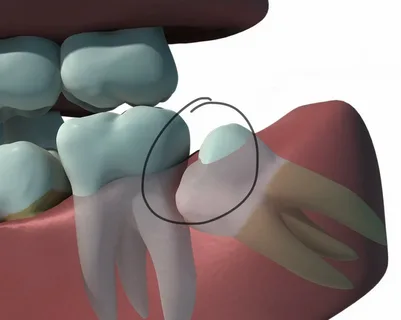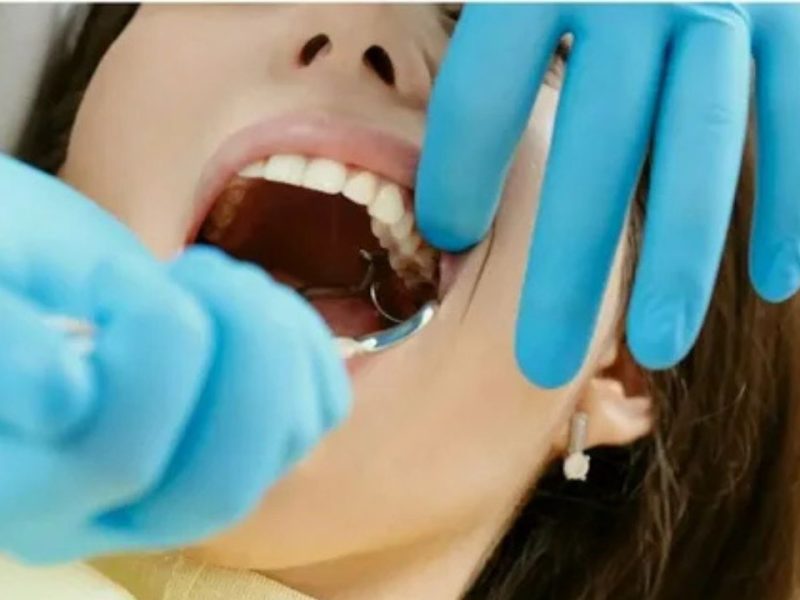Removing wisdom teeth is a common dental procedure that people may need in their late teens or early adulthood. Even though it might sound scary at first, it is a safe and useful process that protects your mouth from pain, infection, and long-term problems.
In this detailed guide, we will explain what wisdom teeth are, why removing wisdom teeth is necessary, how the procedure is done, and what care is needed afterward. This information is written in simple language so that both school children and adults can understand everything easily.
Understanding Wisdom Teeth and Their Role
What Are Wisdom Teeth
Wisdom teeth are the third molars located at the very back of the mouth. They usually grow between the ages of 17 and 25, which is also called the “age of wisdom”. Most people have four wisdom teeth — one in each corner of the mouth.
Why Do Wisdom Teeth Grow Late
Wisdom teeth come in last because they are the final set of adult teeth. Long ago, humans had larger jaws and needed more teeth to chew raw plants and meat. But over time, our diet and jaw size changed, so now there is often not enough space for these extra teeth.
Why Removing Wisdom Teeth is Sometimes Necessary
When Wisdom Teeth Become a Problem
Removing wisdom teeth is not always needed. But in many cases, they cause problems. The most common reasons to remove them are:
- Lack of space: If there is no room for them, they can push other teeth and cause pain.
- Impacted wisdom teeth: These are teeth that stay under the gums or grow sideways.
- Infection or swelling: Food can get stuck around wisdom teeth, leading to gum infection.
- Damage to other teeth: They may press against nearby teeth and cause damage.
- Tooth decay: Wisdom teeth are hard to clean and can get cavities easily.
- Cyst formation: Sometimes fluid collects around impacted teeth and forms a cyst.
Importance of Early Removal
Dentists often recommend removing wisdom teeth before they cause any problems. Early removal usually leads to faster healing, less pain, and fewer complications.
Signs That Show You May Need Wisdom Teeth Removed
Watch for these signs, which may mean your wisdom teeth need to be checked:
- Pain in the back of the jaw
- Swelling in the gums or jaw
- Difficulty opening the mouth fully
- Red, inflamed, or bleeding gums
- Bad taste in the mouth or bad breath
- Headaches or ear pain
If you experience any of these symptoms, visit a dentist for an examination.
Diagnosing the Need for Removing Wisdom Teeth
How Dentists Examine Wisdom Teeth
Dentists use the following methods to decide whether removing wisdom teeth is needed:
- Oral examination: They check your mouth for swelling, infection, or visible tooth problems.
- X-rays: These show the position of the wisdom teeth under the gums or inside the jawbone.
- Discussion: The dentist will ask about your pain, eating habits, and oral hygiene.
If the dentist sees that the wisdom teeth are likely to cause trouble in the future, they may suggest early removal, even before symptoms appear.
The Process of Removing Wisdom Teeth
Step-by-Step Procedure of Removing Wisdom Teeth
Removing wisdom teeth is usually a simple outpatient procedure. That means you can go home the same day. The steps involved are:
- Preparation
The dentist or oral surgeon explains the process and gives instructions. - Anesthesia
Local anesthesia is given to numb the area. In some cases, general anesthesia may be used to make the patient sleep during the procedure. - Gum Opening (if needed)
If the tooth is under the gum, the doctor makes a small cut to reach it. - Tooth Loosening
Special tools are used to gently move and loosen the tooth. - Tooth Removal
The tooth is carefully removed. Sometimes, it is broken into smaller parts first. - Stitching (if needed)
The gum may be stitched back to help healing. - Gauze Pad Placement
A gauze is placed on the area to stop bleeding.
The entire process usually takes 30 minutes to 1 hour, depending on how many teeth are removed and how complex their position is.
What to Expect After Removing Wisdom Teeth
Normal Effects After the Procedure
After removing wisdom teeth, it is common to feel the following:
- Mild pain or soreness
- Swelling around the cheeks and jaw
- Slight bleeding for a few hours
- Difficulty opening the mouth wide
- Sleepiness or dizziness if sedation was used
These symptoms are normal and should get better within a few days with proper care.

Proper Care After Removing Wisdom Teeth
Tips for a Smooth and Fast Recovery
- Take Rest
Avoid school, office, or physical work for 1 to 2 days. - Use Ice Packs
Apply cold compress on the cheeks to reduce swelling. - Eat Soft Foods
Choose soup, mashed potatoes, soft rice, yogurt, or banana. Avoid hot, spicy, or crunchy food. - Avoid Straws and Spitting
Do not use a straw or spit forcefully, as it may disturb the blood clot in the empty socket. - Take Medicines
Use painkillers or antibiotics if prescribed by the doctor. - Keep the Mouth Clean
Do not brush near the wound for the first day. Rinse with salt water after 24 hours to keep the area clean. - Sleep With Head Raised
Keep your head slightly raised when sleeping to reduce swelling.
Most people recover in 3 to 7 days, and complete healing takes about 2 weeks.
Possible Problems After Wisdom Tooth Removal
Though the procedure is safe, there are some rare risks:
- Dry socket: When the blood clot comes out too early. It causes sharp pain and needs treatment.
- Infection: Swelling, pus, or fever may indicate infection.
- Nerve damage: Rarely, nearby nerves may be affected, causing tingling or numbness.
- Bleeding: Slight bleeding is normal. If it does not stop after a few hours, visit the dentist.
If you follow your dentist’s advice carefully, such problems can be avoided.
Benefits of Removing Wisdom Teeth Early
- Prevents overcrowding of other teeth
- Reduces the chance of pain or swelling later
- Healing is easier at a younger age
- Avoids damage to other healthy teeth
- Improves dental hygiene and mouth cleanliness
Can You Keep Wisdom Teeth
Not everyone needs to remove their wisdom teeth. If they grow straight, have enough space, and can be cleaned properly, the dentist may recommend keeping them. But regular check-ups are important.
The Future of Wisdom Teeth
Many scientists believe that over time, humans may stop developing wisdom teeth at all. Our jaws are smaller today, and with modern tools for cutting and cooking food, we do not need as many grinding teeth as our ancestors did.
Conclusion
Removing wisdom teeth is a common and helpful dental procedure. It can protect your mouth from pain, infections, and future problems. With modern tools and proper care, the procedure is safe and healing is quick.
Whether you are a school student or an adult, knowing about removing wisdom teeth helps you stay prepared and take care of your health. If you feel any discomfort in the back of your mouth, do not delay. Visit a dentist and ask if wisdom teeth might be the reason.
FAQs on Removing Wisdom Teeth
What is the best age for removing wisdom teeth
Between 17 and 25 years, when the roots are not fully formed and healing is easier.
Does removing wisdom teeth hurt
No. The area is numbed with anesthesia. You may feel some pressure but no pain.
How long is the recovery after removing wisdom teeth
Most people recover in 3 to 7 days. Full healing may take up to 2 weeks.
Can I go to school or work the next day
It is best to rest for 1 or 2 days before returning to regular activities.
Is it okay to remove all four wisdom teeth at once
Yes. Many people do this to avoid multiple surgeries. The dentist will decide based on your health.












